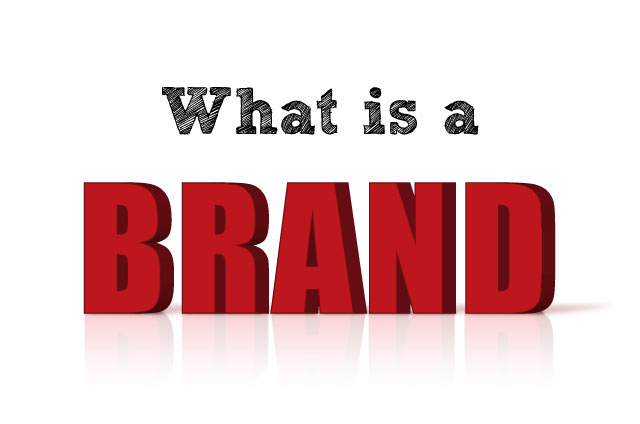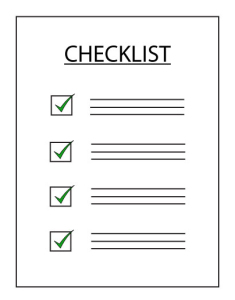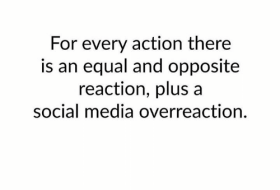Whether you are a nutritionist or an online fitness coach, defining and building your brand can take your business to the next level. Say you’re a personal trainer. You offer high quality services at reasonable prices, and always deliver the best services to your customers. But for some reason, you can’t seem to draw in as many customers or make as big a profit as your competition. You wonder why. It’s not that your competitor’s services are any better than yours. Ultimately, it comes down to branding. A company with a strong brand attracts more customers, and retains more customers.
A strong brand makes your business stand out. It differentiates it. Differentiating your business from others in the same market is incredibly important. Branding increases your company’s visibility, it draws in more customers and it keeps your customers loyal. So whether you are a personal trainer or sell fitness eBooks online, you can benefit from building a strong brand.
What does the Term “Brand” really Mean?
The term brand comprises many different elements. Put simply, your brand is a logo, symbol or voice that your company uses to differentiate itself from the competition. But your brand is more than just a logo or a symbol. All aspects of your branding strategy, from your logo to your personality are designed to create an image or idea of your company in your customer’s minds.
Your brand is how your potential customers feel about your products or services. It shows your customers what your company stands for, what its beliefs are, and most importantly, it demonstrates what your company has to offer.
Every aspect of your marketing and communications with your potential customers, from content marketing to retargeting methods will implement your company’s branding strategy. From the experience and service you provide, to what your company says and does, branding is a complex process, which involves a number of different elements.
A strong brand:
- Makes your business look like the authority in the market.
- Solidifies your credibility.
- Prompts the customer to take action, whether it’s making a purchase or signing up to a newsletter.
- Demonstrates your company’s message and values.
- Makes your customers see your company as the only solution to their problem or need, which, in turn increases customer loyalty.
- Connects and engages with customers on a personal and emotional level.
Branding strives to create a strong and discernable presence in the market, which will ultimately lead to attracting and retaining more customers.
Ultimately, a brand is what will identify and differentiate your company.
We have put together a checklist at the end of the article to summarize the process and stages of defining and building your brand, so be sure to grab a copy.
Stage One: Preparation
To create your brand and implement your branding strategy, the first step is preparation. You need to do five simple things before you can begin building your brand.
- Define your Business
Defining your business is incredibly important. Before you build a strong brand, you must ensure that your business is clearly defined and that there is a solid market for that business.
Before you can build your brand, you must know the answer to the following questions:
- Is there a market for my business?
- Am I meeting a need or solving a problem with my product or service?
- Are people willing to pay for my products and services?
To answer these questions, you need to do some research.
- Active Discussions: Whether it’s on forums, social media sites or bookmarking websites, like Reddit, you need to check if there are active discussions and groups based around your product or service. If you are a nutritionist or health coach who offers gluten free cookbooks or diet plans online, you need to see how many people are talking about gluten free food on the Internet.
If you can only find a dozen or so discussions, then this business idea is too limited, and simply won’t work. Instead, you’ll have to consider covering another aspect of your chosen niche. If you find hundreds or thousands of discussions about your market, then it is a good niche.
- Keyword Research: Consider how many people are searching for the type of product or service you offer each month. Write down a list of three to five main keywords associated with your business. For example, if you are a personal trainer in Los Angeles, who focuses on training women over forty, these may be your top three keywords:
Personal trainer Los Angeles
Personal trainer for over 40s
Personal trainer for hire
If you want to get keywords for your niche, visit http://keywordtool.io/. This website provides you with hundreds of search terms. For example, if you type in the word bodyweight training into the search box on the site, it will display hundreds of other related keywords.
Once you have your keywords, use a keyword tool to research how often these terms are searched for. There are many keyword tools that allow you to do this, like Word Tracker. If your terms are searched for more than 30,000 times per month, then this is a strong market.
Social Media Sites and Groups: If you can find hundreds of Facebook pages, LinkedIn groups and any other groups or social media pages based on your niche, this is a good sign.
- Blogs and Newsletters: Search online for blogs in your niche. You can find hundreds of blogs by doing a quick search on Google. For example, if you are in the diet niche, you could type in “gluten free diet blog”, or if you are a yoga blogger who specializes in bikram yoga, you could type in “bikram yoga blog”. You can also find blogs by searching blog directories, like Technorati and Blogdigger.
The best way to find newsletters is on the blogs you find, and by typing in your niche, followed by the term “newsletter”, into Google. If you find an active blogging community online, then you’ll definitely have a strong market for your business. If you also discover active email newsletters offered by sites in your niche, this is also indicative of a good market.
- Similar Websites: If you can see that other people are offering a similar service to you, then this is a good sign. If you are an online bodybuilding nutritionist, for example, and you can find other sites offering a similar service, then this means that there must be a paying market for it. Competitor sites also let you know that there is a need for your product or service.
- Advertisements and Affiliations: If you can find advertisements and affiliate marketing programs in your niche, then this means that it’s profitable and there’s a market for it. You can search for affiliate products on sites like ClickBank.
- Define your USP
All businesses need to have a unique selling point, or a USP as it is also known, which differentiates it from its competition. For example, a bodybuilding gym that also sells supplements is more likely to attract customers than a generic bodybuilding gym. Think of something that makes your business unique. You want to be as specific, and as niche as possible when developing your USP.

- The Goal
Ask yourself, what is it that you want your brand to achieve? Do you want to offer fitness advice through a blog with a readership of over 60,000? Are you a personal trainer that wants to double the amount of customers they train? Before you begin building your brand, you must have clear-cut goals in mind for your business, and know exactly what you want to achieve. If you don’t know what your company’s goal is, you won’t be able to build your brand.
- The Metrics
Metrics are a very important part of any business. When you implement branding techniques, you need to decide what metrics are going to be central for your business. Decide which metrics will be important to you. Visitors to your site, subscriptions, clicks, Facebook likes and blog views are all metrics that you should consider paying attention to. You need to decide on which metrics are going to be most essential for your business.
Tracking metrics is fairly simple, as social media sites, blogs and websites provide you with data on things, including likes, clicks and visitors. Blog metrics are fairly easy to track. This is because most blogging platforms, like WordPress.com, will tell you how many views your blog is getting on your dashboard. For tracking website visits, Google Analytics is the perfect tool. It gives you very specific details on many aspects of your website, like traffic, views and traffic sources. Not only does this tool let you know how much traffic you are getting, but it also tracks your site’ conversion rates, and it gives you detailed sales figures.
- The Values
Defining your company’s values is incredibly imperative. If you don’t know what your company’s values are, then you won’t be able to build your brand. Whether its friendly services, or high quality products at low prices, your values are an important part of your brand, and without them, developing and defining your brand will be very difficult. Values can include anything from community to family. Your values will help you to make important company decisions and grow your business. You can refer to your company values each time you need to make a decision regarding your company.
Stage Two: Developing your Brand:
Once you have defined your business, you can then begin building your brand. As mentioned earlier, your brand consists of many different elements. When combined in the right way, these elements show your customers what your company is all about.
1. Visuals
An essential part of branding is your company’s visuals. These include the logo, the color scheme, the font, business cards, symbols and any other graphics, images or visual materials associated with your company. Some of the world’s most famous companies, including McDonald’s famous golden arches, or Apple’s bitten apple, are quickly identifiable based on their logos alone.
- The Logo
When it comes to branding, a strong logo is essential. A strong logo will set your business apart from the rest and solidify your brand. A logo is essentially a visual representation of your brand. It provides your potential customers with a visual representation of what your company is all about, what you company will do for them, and even what your company’s values are.
Here are two examples of strong logos, which really help to define a brand. One of them is from a billion dollar company, and one is from a start-up company, but both are incredibly effective.
The Nike Swoosh. The Nike tick, or the swoosh as it’s officially known, is one of the most recognizable logos in the world. This logo was designed in 1971, and has never been changed, making it an incredibly timeless symbol. It follows the rules of a good, effective logo. It’s scalable while still being readable and it can be negative and it still reads the same. Most importantly, however, this logo has a simple meaning behind it, which accurately represents the Nike brand. The swoosh is actually a symbol of the Greek God of Victory, who influenced hundreds of warriors.
The Stresslezz Logo: Stresslezz is a start-up company in the health and wellness niche, which specializes in stress relief. The company’s logo is an example of a simple, yet highly effective logo. It is scalable, but it’s still readable, and it utilizes color in a very efficient way. The logo was created with great attention to color psychology. Blue, which is utilized in the logo, is a very calming color, which also represents honesty and loyalty. Orange, which is also used, is a color that radiates warmth and promotes happiness. According to color psychology, orange is also an uplifting color, which can offer strength in difficult times.
Hiring a graphic designer with experience in creating logos is strongly recommended. A graphic designer will be able to take everything that your company stands for, such as its values and goals, and combine it to make a logo that truly defines your brand.
- The Color Scheme
If you want to set your company apart from the rest, and create a brand, you need to utilize a color scheme. Studies have shown that the mind is drawn to color first, before anything else. For example, when the world yellow is printed blue, the mind will first read the word as blue. Studies have also shown that people notice the colors on a logo or image before they notice the image itself.
If you want your company to become a recognizable brand, then it must utilize a color scheme that your customers will instantly recognize as belonging to your company. If you can make your customers associate your color scheme with your brand, then you will be one step closer to differentiating yourself form your competitors.
Choose your company colors carefully. Color psychology is incredibly complex and important. For example, the color light green generally symbolizes the environment, so it’s perfect for green and outdoor companies. As blue represents communication and clarity, as well as calmness, it is utilized by many social media companies like Facebook and Twitter. Red is a color that is supposed to increase appetite, which is why it is used by many leading food brands, like Kellog’s McDonald’s, Lays, Heinz and Coca Cola.
- The Font
Just as important as your logo and your company’s color scheme, your font can identify your brand. Choosing the right font is important. For example, a women’s yoga class likely wouldn’t use military style fonts and a personal trainer for bodybuilders likely wouldn’t use a whimsical font. Choose a font that has character and fits your brand’s style. Like a good logo, a good font should be scalable, but still readable, simple, yet attention-grabbing, and of course, it should be timeless.
2. Words
When people hear the term branding, they generally think about logos and symbols, but your brand is more than just visuals and imagery, it is also words. What your company says is very important. Through words, you are able to provide your potential customers with a well-rounded view of who you are and what you do.
- The Voice:
Your brand needs to have its own voice, which you will use throughout all of your content and marketing materials. Your brand’s voice is its personality. When customers read your content, they should be able to tell that it’s from your brand. For example, if you are a yoga instructor, who offers fun and friendly services, then your writing needs to reflect this. Writing blog posts with a formal and assertive voice wouldn’t match your brand. All aspects of your company must combine perfectly to create well-rounded view of your brand in your customer’s minds. Whether it’s confident and assertive or casual and laid back, make sure to keep your company’s voice and personality consistent.
- The Vision Statement
To develop a strong brand, you need a vision statement. Your vision statement is a sentence or short paragraph that outlines what you want your company to become and accomplish in the future. It describes the desired vision you have for your brand in the future. It should be aspirational and inspirational and it must help you to guide your brand toward its future goals.
To create a vision statement, you need to consider your goals, your values and what makes your company unique. You also need to think about where you want your company to be in five, ten or even fifteen years. Your vision statement must be succinct, and inspirational. It should not outline how you are going to achieve this vision for your company.
Here are some examples of effective vision statements:
Avon: “To be the company that best understands and satisfies the product, service and self-fulfillment needs of women – globally.”
Special Olympics: “To transform communities by inspiring people throughout the world to open their minds, accept and include people with intellectual disabilities and thereby anyone who is perceived as different”
Microsoft: “A personal computer in every home running Microsoft software.”
- The Mission Statement
A mission statement is a paragraph that describes the purpose of your company and your brand. The mission statement, unlike your vision statement, describes your company in its current state, and its shorter term aims and goals.
A good mission statement, on a basic level, outlines what your company does, how it does it and who it does it for. It describes the needs that your company will meet and how your company meets these needs. It is also tells customers what your company’s values and principles are, and why customers choose your brand over your competitors. Your mission statement needs to be easy to read, and it needs to provide your potential clients with an idea of your brand’s mission.
These mission statements are highly effective:
Chevron: “At the heart of The Chevron Way is our Vision to be the global energy company most admired for its people, partnership and performance.”
Starbucks: “Our mission: to inspire and nurture the human spirit – one person, one cup and one neighborhood at a time.” You can view the rest of the statement here.
Barnes and Noble: “Our mission is to operate the best specialty retail business in America, regardless of the product we sell. Because the product we sell is books, our aspirations must be consistent with the promise and the ideals of the volumes which line our shelves. To say that our mission exists independent of the product we sell is to demean the importance and the distinction of being booksellers. As booksellers we are determined to be the very best in our business, regardless of the size, pedigree or inclinations of our competitors. We will continue to bring our industry nuances of style and approaches to bookselling which are consistent with our evolving aspirations. Above all, we expect to be a credit to the communities we serve, a valuable resource to our customers, and a place where our dedicated booksellers can grow and prosper. Toward this end we will not only listen to our customers and booksellers but embrace the idea that the Company is at their service.”
We have a prepared a free checklist at the end of the article to break down the stages and points of developing and building your brand. Don't fail to download the free pdf, exclusive for all FMI Guild members.
Stage Three: Building your Brand
Once you’ve decided on your company’s visuals and have a strong vision statement, mission statement and voice for brand, it’s time to put these elements of branding into action. You need to get your brand across to your consumers.
1. Build a Professional Website
All of your company’s branding efforts need to be put into action on a professional looking website. The website should tell visitors everything they need to know about your brand. Your website is the place where you put all of your branding efforts so far into action. It should be a strong symbol of your company’s brand.
Unless you are a skilled web designer, writer and graphic designer building your own website is a bad idea. It is best to hire someone that has experience building and designing websites. You can find freelancers on websites like oDesk and eLance. If you are looking for a web developer who specializes in the fitness industry, check out Natalie Minh Interactive.
What to Include on your Website
- Homepage: This should be clear and concise. Statistics show that on average, a website has just a few seconds to capture the readers’ attention. This means that you have less than ten seconds to tell the reader what your business is, what it can do for them, and what they need to do next.
An example of a high quality home page is the Raw Rock Chick. Utilizing, bold, but not garish imagery, and effective copy, the Raw Rock Chick’s home page is effective. The text on the home page is broken up, making it very easy for readers to digest.
- About Page: Next to the homepage, your about page is the second most important page on your website. Your about page is also a vital part of your company’s brand. Make sure that it shows the customer a more personal side of your brand, and is written in the voice you are using for all of your company’s branding. Creating an about page that converts can be tough. Company’s often make the mistake of making their about page too dull.
Here are some great examples of about us pages that manage to be professional and interesting and, as a result, really capture the reader’s attention.
The Raw Chef: The Raw Chef’s about page tells the reader everything they need to know, without boring them. It utilizes light humor, in a way that connects and engages with the reader.
Anacostia Yogi: This about page is personal and tells the reader a story of how the site came to be. It gives the reader a strong sense of Anacostia Yogi’s brand, particularly her values. It’s also short and sweet, so perfect for busy yoga enthusiasts.
Daily Cup of Yoga: This narrative-style about page is incredibly effective. It boasts the right mix of professionalism and personality. It tells the reader all that they need to know about owner Brian, through a personal story, which really engages and relates to the reader.
- Services: A services page is essential. It should outline all of the services and products that you offer.
- Contact: You need to make it easy for your website visitors to contact you. Include a contact form or an email address, as well as links to your social media profiles and, if you can, a phone number.
- Mission Statement: Don’t forget to post your company’s mission statement on your website. Your mission statement motivates your customers and tells them more about what your brand is all about. You can include your mission statement on your about page, but it’s usually better to keep them separate.
2. Create a Blog
According to statistics, 77% of internet users read blogs. This makes a blog a fantastic place to develop your company’s brand. Start a blog for your company. On the blog, make sure you use your company’s logo, color scheme and font. If you happen to be a health and fitness fanatic, and a passionate writer, then write the blog yourself. If your writing isn’t up to scratch, however, it may be a good idea to work with a writer.
A blog provides your potential customers with valuable, relevant and useful content, but this isn’t its only advantage. A blog is a platform for your company, and a fantastic tool for branding. With a blog, you are able to get your company’s personality and voice across to readers, in a way that wasn’t possible before. A good blog is consistent, informative, useful, valuable and relevant.
Creating your Blog
Nowadays, starting a blog is easy. There are many tools and platforms that make creating your blog a fairly simple process. To start your blog yoou will need to purchase a domain name and hosting. If you create an account on WordPress.com, you only need to purchase your domain name, but will be fairly limited in what you can do on your blog.
On the other hand if you use WordPress.org, you will have full control over your blog, but you will have to purchase hosting, as well as a domain name. Online, there are a wide range of hosting companies, like Blue Host and Host Monster. Make sure that you do research into hosting companies on Google, to find the one that best suits your needs.
Daily Cup of Yoga: The Daily Cup of Yoga blog is filled with useful and relevant information, and it even includes posts from guest bloggers too.
3. Start Social Media Accounts
According to statistics, 72% of internet users participate on social media sites, like Facebook and twitter. This means that social media is an incredibly useful platform for building a brand. Companies are able to use social media sites to create much more personal relationships with their customers. Sites like Facebook and Twitter are the perfect place for updating customers on your brand, promoting content like your blog, and for offering useful tips and information. Image-focused social media platforms, like Pinterest and Instagram are the perfect place to get the visual side of your brand across.
Stage Four: Increasing Brand Awareness
Once you have fully defined, developed and built your brand, you need to increase its visibility. Increasing brand awareness is important. Your brand can only make an impact, and differentiate your company if other people are aware of it. Building a website or blog is not enough anymore to attract customers. You need to reach your customers with your brand.
Content
Make sure that you are frequently creating high quality content. Whether it’s videos, blog posts, or how-to-guides, content will increase your brand’s visibility. As mentioned earlier, a blog can differentiate your company from the competition. A blog can establish your company as an authority in the field and solidify your brand. You also need to be promoting your blog posts. Bookmarking websites like Reddit and Stumbleupon can be useful for opening up your content to a wider audience.
Videos are also a useful tool for businesses. Statistics show that people are 64% more likely to buy a product after watching a video about it. Consider creating videos, for your product or services. Share these videos on Youtube too. According to statistics, Youtube is now the second largest search engine, making it a fantastic platform for increasing brand awareness.
SEO
Recently, SEO has developed a poor reputation, thanks to years of keyword stuffing and other bad SEO practices. When done right, however, SEO is a vital tool for increasing a brand’s visibility. According to statistics, the search engine results send 300% more traffic to websites than social media sites do. Appearing near the top of the search engine results can increase your brand’s visibility and improve your conversion rates. Statistics show that 75% of internet users never click past the first page of search engine results. One of the most effective ways of boosting your search engine ranking is SEO. Research keywords each time you are creating content.
Social Media
From Facebook to Pinterest, social media sites are a fantastic platform on which to improve your brand’s visibility. You can use Facebook and Twitter to share your blog posts and any other content you create. Social media is also the perfect place to share details about any offers, deals or updates that your potential customers may be interested in.
PPC
A strong pay per click advertising campaign can give you results quickly. Statistics show that 64% of people looking to buy something online click on the sponsored ads displayed.
Building a brand takes time. It’s not something that is going to happen overnight with planning, consistency and dedication, however, you can turn your company into a brand.
The process of defining and building your brand is not an easy task. It is the first step to developing your marketing plan, and it takes a lot of work and dedication. However, if you carry out the strategy explained in this article correctly and consistently, it will set you apart and can give you an edge in this highly competitive world of fitness.
To help make it easier for you, we have created a checklist in a pdf form summarizing all the important points and strategies on how to define your brand that you can reference during the process of defining and building your brand.
If you’d like a copy of the checklist to implement all of these points, enter your email below to get the Checklist emailed to you.













